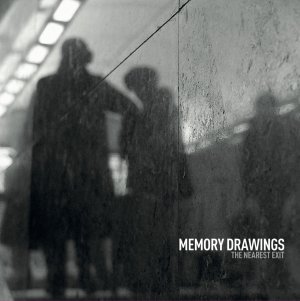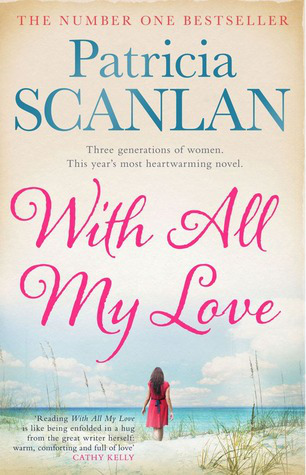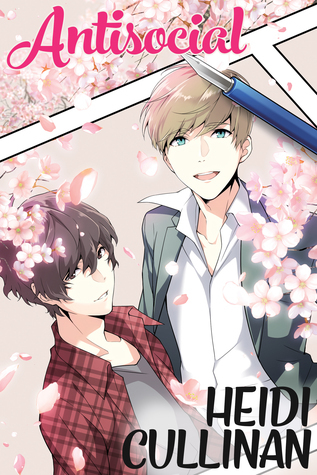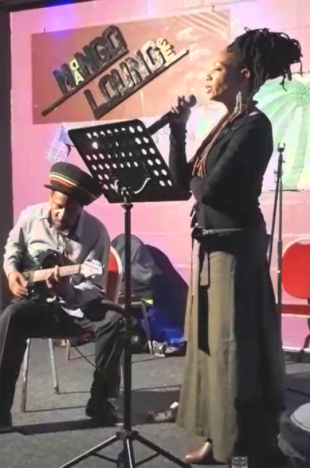“Ste-llaaaaaaaaaaaaa!” A desperate Stanley Kowalski, played by the inimitable Marlon Brando, in a ripped t-shirt bellows the name in remorse, in the unforgettable scene from A Streetcar Named Desire (1951), adapted into a screenplay by Tennessee Williams. Today, at the end of the annual Tennessee Williams/New Orleans Literary Festival, contestants line up to honour the characters Stanley and Stella and the legendary Tennessee Williams in a Stella and Stanley Shouting Contest. In 2011, actor and author Elena Passarello became the first woman in the history of the festival to win the contest.
I want to scream too.
In that attempt, I have immersed my head inside water, in a locked bathroom. First, I open my eyes, to take in the blue of the bucket, in imitation of a natural body of large water. I open my mouth, parting the lips to an inch distance, and let a small, preparatory scream. The first scream is timed to three seconds, but is immediately subsumed within the sound of the air bubbles. I wait for the water to become still before the second scream; this one is timed to five seconds, and is deep from the chest unlike the first, which remains at the level of the throat. The last scream comes from a deeper place, the abdomen pushes the diaphragm up, and is timed against the air remaining in my lungs. By this time, the air coming to the surface is rapturous but violent, and loud. I can hear the sound of my scream inside water; it feels linear, at least to me, but I can also hear the air throwing the water against my ears, in waveforms.
I scream underwater because I cannot scream above its surface, at least not in the one-layer brick-walled apartment that I live in, in the urban neighbourhood. When I try to scream, I use my body, but refrain from letting the sound out. Only air is thrust outwards but, without the sound the body reverberates uncontrollably. In that state, the wide-opened jaw aligns itself with my opened chest, and the arms extend in an arch. The hands form claws and fists, morphing into non-human limbs. I don’t look beautiful when I am in this pose, but I look strong. When my lungs have deflated and begin breathing again, I become aware of pain – raw pain – at the points where the jaws meet, and in my chest.
Unlike Passarello, who is a trained voice-artist, and who performed “Stella!” in the Tennessee Williams/New Orleans Literary Festival for confronting her fear, I scream for releasing the potential energy that builds in my chest, over a period of time. This usually happens after subsequent events in which I have to perform a role, uncharacteristic or undesired. On the contrary, I also feel this hauling energy after long periods of silence. For these reasons, I believe I scream as much for physical restoration as much as for reclaiming power. Passarello, in an interview to the Harper’s Magazine blog, says about her experience,
“My own take on “Stella!” for the contest arose from a very silly exercise in confronting fear. I was terrified to do it for a few reasons: I hadn’t performed seriously for several years; I was afraid I wasn’t going to be able to control the noise that came out of my mouth; and I worried it would be puny and therefore embarrassing. I had to force myself to go through with it, and I wouldn’t have if I hadn’t made a promise to my publisher. There was also something about being a female out there, making the Stella noise, that added some pressure related to reassigning the sound to a female body. I knew that whatever bellow came out of my mouth would be either unladylike or un-Stanley-like, and that lose-lose situation terrified me.”
In her book Let Me Clear My Throat, Passarello has essays and interviews collected around the human voice, as a poetic synaesthesia, tracing people who used the “untapped sonic pockets” across culture and time. One of her essays dedicated to the phenomenal Judy Garland, allows the reader to experience her Carnegie Hall 1963 concert, its acoustics, and the experience of the audience who had access to her performance. In the University of Iowa’s International Writing Program, Power of the Pen: Identities and Social Issues in Fiction and Nonfiction, Passarello shares, comparing Carnegie Hall as a human womb,
“I thought about the idea of the womb as this sonic space, this music hall, and then I thought about the idea of Judy completely rocking this music hall… And then I started researching the acoustics of Carnegie Hall, how sound travels there. If you are sitting in the womb of that hall, which you can do today and you could do in 1963 and you could do 100 years before, what the sound does to the body that’s sitting there… what was happening to the bodies of the people that didn’t just watch her, but heard her and felt her…”
When I started my own research about sound, I reached an interesting TED talk by the artist Christine Sun Kim called The Enchanting Music of Sign Language. Kim was born deaf, and like many of us with the hearing ability, was taught to believe “sound wasn’t a part of my [deaf] life.” According to her, sound, like money, control, and power, is social currency, and determines what status one can hold in the society. Sound, could determine, whether a person is empowered or disempowered, especially in an audio-centric world like the one we live in.
On a trip to Berlin, in an art residency program, Kim discovered galleries and museums filled with auditory art, and challenged by this, decided to bring sound and music into her own art space. Here she found parallels between the American Sign Language (ASL) and music. ASL, much like sound, can be captured on a piece of paper; she says, “ASL is more like a chord – all 10 fingers need to come down simultaneously [as on the piano] to express a clear concept.” From here, she transcribed ASL, as one would transcribe music, on a sheet of paper, visualizing signs into images, ideas, and as movements of the body. “All day”, in ASL, if seen as visual music would look like this:
 Art by Christine Sun Kim | Photo by Erica Leone
Art by Christine Sun Kim | Photo by Erica Leone
At the end of her talk, Kim implores her audience, to think “about what defines social currency and allow ASL to develop its own form of currency – without sound. And this could possibly be a step to lead to a more inclusive society. And maybe people will understand that you don’t need to be deaf to learn ASL, nor do you have to be hearing to learn music.” Inspired by Kim, I drew my own scream, when underwater, if it appeared on a music sheet:
 Scream, Underwater
Scream, Underwater
My final research drew me to the deaf percussionist Dame Evelyn Glennie, who lost most of her hearing by age 12, and who after auditioning twice for Royal Academy of Music in London was accepted. Her acceptance into the institution opened doors for people with all forms of physical disabilities to be considered as equal to any other application, and “changed the whole role of the music institutions throughout the United Kingdom.” In her TED talk How to Truly Listen, Glennie inspires us to listen to sound as she listens to it, truly, and with her entire body. She recalls a memory with her teacher, “Well, I think I do too [listen with ears], but I also hear it through my hands, through my arms, cheekbones, my scalp, my tummy, my chest, my legs and so on.”
Demonstrating the use of her body, and the mallets on a marimba, Glennie helps us visualize what participation in sound could feel like. And, this is where it gets interesting because she communicates how inclusion would help us experience this world in a holistic way. She takes the example of how the inclusion of the deaf community in music institutions has allowed acousticians discussing about the type of halls they could install, the one, which could deliver enriched experience similar to the Carnegie Hall. The tiniest, faintest of sound, which is actually quite broad, without the need of cosmetic enhancement in a hall, would reach the audience as it is. That could make us, the ones who can hear, participators of sound much more than what we are today.
Glennie is convincing about the body being our own indigenous resonating chamber. So I tried to listen with my body. While typing a text message this morning, I witnessed the movement of my thumbs, as if they were trained to a particular music that my mind did not know of, an invisible sheet of music. Experimenting with it further, I took the phone near to my ear, while continuing to tap with the thumbs. The result, even though the text itself had multiple errors, was a state of resonance, proximity, and meditative attention almost resembling joy.
As an ambivert, identified with the introvert-side of the personality spectrum, I navigate the world of sound and silence, where sound is mostly noise, and silence is often misunderstood or misinterpreted. So I try to create my own islands where I can experience them both. In the 2012, Paris Review interview, Passarello shares that humans have these sonic pockets that allow sound responses to different kinds of mortal peril. Unfortunately, in the modern world, even though it is more audio-centric, many of these sonic pockets have become untapped, primarily because “we just don’t have the occasions to use these places anymore, now that we’re warm and safe and bipedal.”
It may be that we are no longer in a mortal peril, we are in a different kind of peril, a culture which promotes only one model of personhood, which makes inclusivity and reclaiming sound and silence more important. Passarello writes in the interview, “the voice itself does not really exist—it is not a designated body part at all, aside from those two miniscule cords behind our epiglottis. Every other part of the complicated vocal mechanism is a ridiculous bit of evolutionary thievery. We literally stole our voice from other body parts—the organs that help us breathe, eat, and support our skulls. It’s a fact—we only speak because we had to, and we literally re-wired ourselves to meet that burning need for self-expression.”
I believe, in any art or skill, whether with sound or with silence, we are trying to recompense this “burning need for self-expression”. For many of us, it is certainly for me, it is also taking claim of the voice mechanism. It simply means allowing the choice of sound and of silence on the person, the participator; thereby, treating both, sound-screams underwater and soundless-screams above water, as empowerment.
Advertisements Share this post:




